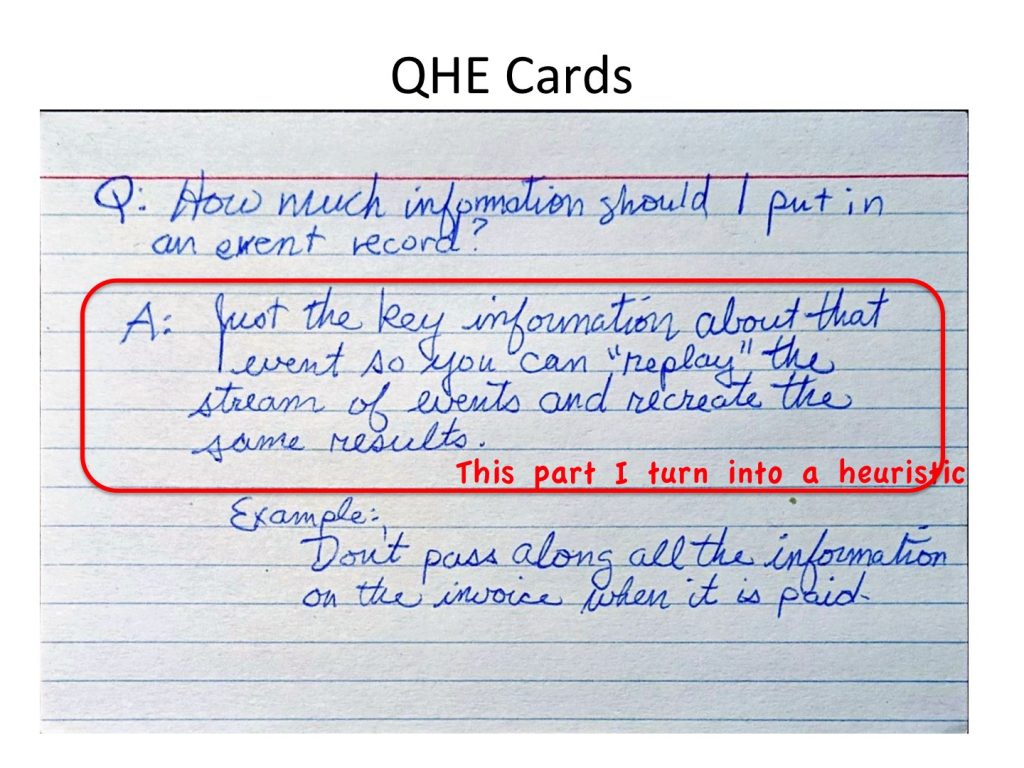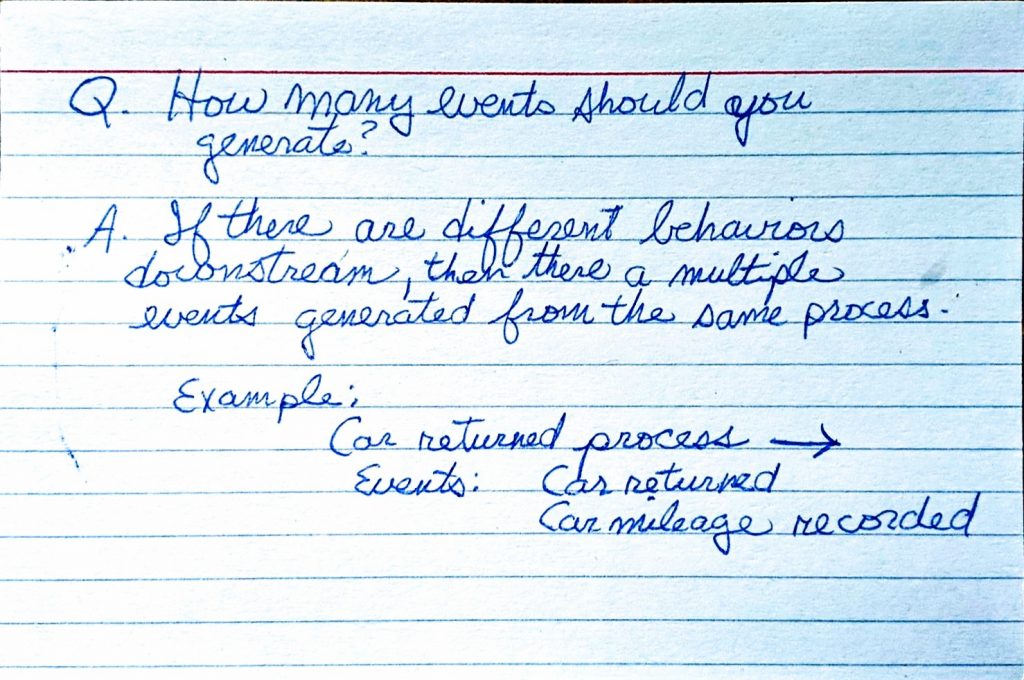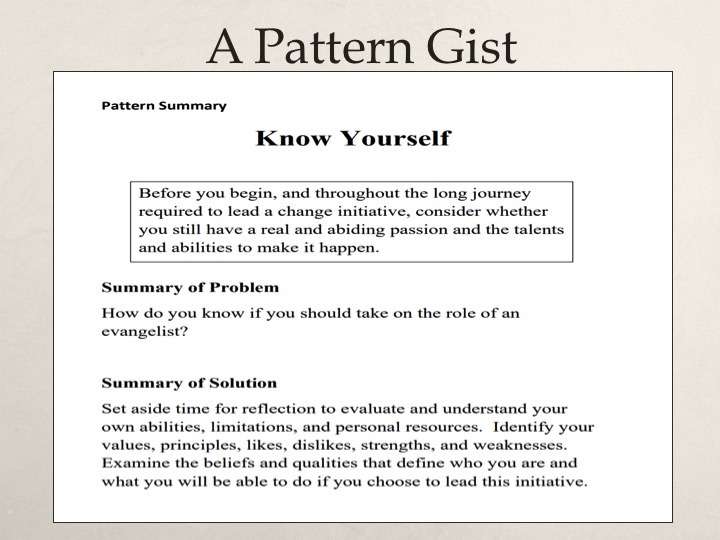Writing, Remembering, and Sharing Design Heuristics
I’ve been experimenting with simple ways to record software design heuristics. I want to find ways to vividly bring to mind the design heuristics I use or learn about from others. Ideally, any written heuristic should be shorter than a software pattern and somewhat more detailed and informative than a single pithy phrase.
There are three reasons it is important to physically write heuristics instead of just talking about them or clipping online sources into a note taking app:
1. Writing helps us remember the important bits
For a good overview of the benefits of notetaking, read this lifehack article by Mark Pettit. If nothing else this should inspire you to jot down and/or draw by hand the key bits of the next talk or lecture you listen to. What we write we remember.
2. Writing in longhand helps us process our experiences
Research shows that the act of writing in longhand is quite different than typing. This Medical Daily article by Lizette Borreli summarizes research into the memory boosting benefits of writing longhand:
"…writing by hand allows the brain to receive feedback from a person’s motor actions, and this specific feedback is different than those received when touching and typing on a keyboard… Overall, it seems those who type their notes may potentially be at risk for 'mindless processing.' The old fashioned note taking method of pen and paper boosts memory and the ability to understand concepts and facts."
3. Written heuristics can be shared
Once you’ve written some tried and true heuristics in your own words, you can share them with others. Even better, use these heuristics to stimulate a deeper discussion into the design heuristic space you are exploring. Don’t shy away from discussions about nuances, counter-examples, edge cases, and competing heuristics (alternative ways to tackle a specific design problem). You may uncover a wealth of new heuristics to ponder and open up your mind to new ways of solving familiar problems.
If the person you are conversing with doesn’t know much about the topic area of your heuristics, the questions they ask will likely lead you to clarify your thinking (or at least improve your explanations). They won't get what you are saying if you speak too much in shorthand. If they know more about the topic, you may have a lively conversation about heuristics and lessons they’ve learned over time. They may validate your heuristics as well as give you some new ideas.
A Simple Idea- QHE Cards
I’ve been playing around with using index cards as a means to quickly capture a heuristic. I structure a heuristic in three parts: a question, the answer (which can be then polished into a couple sentence heuristic), and an example or two to help me remember. I call them QHE (Question-Heuristic-Example) or “Q-Hee” cards, for lack of a better name. Using index cards to record design heuristics is inspired by CRC (Class-Responsibility-Collaborators) cards invented by Ward Cunningham and Kent Beck and popularized in my first design book. I like index cards.
Here’s two QHE Cards describing heuristics found in a conversation with Mathias Verraes about designing event records:


QHE cards are simple to write. I don’t worry about precision or formality. With a little bit of effort I can turn a question and answer into a short heuristic statement. For example, here's my first cut at a heuristic for what information to include in an event record:
Heuristic: Only include information necessary to "replay" an event and achieve the same results. Don't include sensitive information or extra information simply because you think it might be useful.
An example or two to jog my memory is essential. And just like CRC cards, they can be too terse for others to understand (or to remember, if I wait too long). To make a heuristic memorable, I need to actively integrate that heuristic into my design heuristic gestalt. This is especially true if it is about a design topic I am not that familiar with.
To create a stronger memory and deeper understanding I can write more about the heuristic, sketch out a more detailed example, write some code, and/or draw a diagram…whatever it takes to go a bit deeper.
Heuristic gists are especially useful when you want to share heuristics with others. They may need a bit more context to understand what you mean. I like to write them in a form similar to pattern gists. Here’s an example of a pattern gist from Fearless Change Patterns by Mary Lynn Manns and Linda Rising:

And here’s how I rewrote the QHE card for deciding when to generate different events from a process as a gist:
Multiple Events for a Single Process
You need to balance passing along information needed by downstream processes in a single business event with creating multiple event records, each designed to convey specific information needed by a specific downstream process.Summary of Problem
How do you know how many events to generate for a single business process?Summary of Solution
If different processes downstream react differently, generate different events. For example, handling a “rental car return” request might generate two events and event records: “car returned” and “mileage recorded.” Even though the mileage is recorded at the time a car is returned, mileage could be recorded at any other time as well. It is a cleaner design to generate two events, rather than cram information into a single, overloaded “car returned” event.
The act of writing a bit more detail in a gist often leads to further questions which lead to even more design heuristics. For example, these questions quickly come to mind: When is it OK to pass along extra information in an event? When is it not OK? What kinds of information should never be passed along in an event record? What happens if a new business process needs slightly different information?
And that’s the point. There are a myriad of details to work out for any real design. And many more heuristics for solving design problems and learning to live with their consequences. By writing down your heuristics, you’ll remember what you were thinking at the time. Note to future self: That effort just might be worth it!